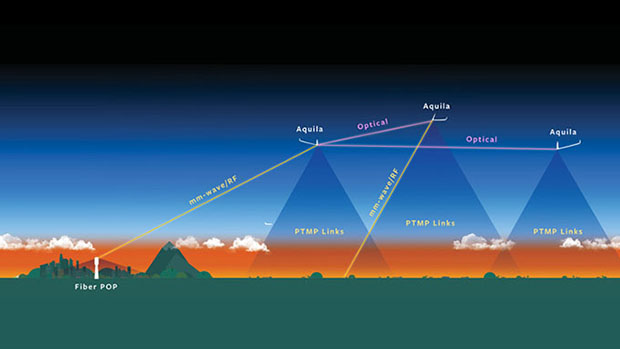Facebook Connectivity Lab Demonstrates 20 Gbps Wireless Broadband Over An 8 Mile Area
It's no secret at this point that Facebook has huge ambitions to make sure that anyone in the world can access the internet - even in places where ISPs might not be available for many miles. Thus, the company's Connectivity Lab has been hard at work to advance these efforts, and once again, we're being shown some impressive networking breakthroughs.

Using the millimeter-wave portion of the radio frequency spectrum, Facebook believes that it can ultimately deliver many gigabits of information over many kilometers for each base and receiver. In a recent test, the company managed to beam 20Gbps over 13KM using this technology, which is the equivalent of streaming "1,000 ultra high-definition" videos at once. Of course, video isn't so much the priority, but it's nice to know that the capacity is there.
The immediate goal is to use millimeter-wave (MMW) technology to transmit bandwidth from the ground to Aquila units - UAVs that will be used to beam the internet to those on the ground within its supported radius. What's really notable about this technology is its lower power requirements: to transmit the tested 20Gbps requires just 105W at the transmitter and receiver. If that doesn't sound impressive, bear in mind that your desktop PC likely uses more than that by itself.

Ultimately, Facebook wants to be able to optimize its Aquila UAVs to be able to handle 30Gbps speeds over a span of 30-50KM. That's equivalent to giving 3,000 people access to 10Mbps connections. While the company hasn't given specific values on the allocation provided to users, whatever solution is provided could be much more attractive than satellites, or worse, no Internet access at all.
So, where do we go from here? Facebook's Connectivity Lab is hard at work on fine-tuning and optimizing the technology. There's no hint as to how long it will take for the team to reach its goal, but it's already talking about pushing the limits even further: hitting 40Gbps bi-directional, with testing expected to begin in early 2017.

